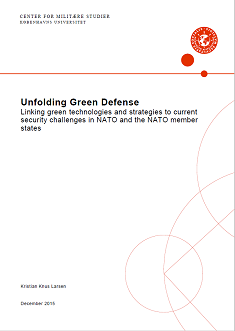Unfolding Green Defense
In recent years, many states have developed and implemented green solutions for defense. Building on these initiatives NATO formulated the NATO Green Defence Framework in 2014. The framework provides a broad basis for cooperation within the Alliance on green solutions for defense. This report aims to inform and support the further development of green solutions by unfolding how green technologies and green strategies have been developed and used to handle current security challenges. The report, initially, focuses on the security challenges that are being linked to green defense, namely fuel consumption in military operations, defense expenditure, energy security, and global climate change. The report then proceeds to introduce the NATO Green Defence Framework before exploring specific current uses of green technologies and green strategies for defense. The report concludes that a number of political, military, organizational, and technological challenges and possibilities are related to the development of green solutions for defense. Based on this conclusion the report argues that it is essential to comprehensively describe how a green solution is linked to a security challenge to develop relevant and viable green solutions for defense. The report is concluded with seven recommendations aimed at informing and supporting the further development of green solutions for defense in NATO and in the NATO member states.
The recommendations are as follows:
- The NATO framework and the Green Defense concept should be further substantiated and should clearly describe which activities Green Defense is composed of and prioritize.
- Much research has already been done by NATO member states on green solutions for defense, and NATO should facilitate more coordinated research efforts and increased information-sharing to avoid duplicate research.
- The number of green technologies that potentially could be used by military organizations is vast and currently unmapped. This lack of overview is a hindrance to strategic political prioritization. NATO should therefore seek to develop a more comprehensive mapping of the available technologies.
- Political and military decision-makers in NATO and its member states should seek to analyze and comprehensively describe how a green solution is linked to a security challenge before deciding on a specific set of green solutions.
- Green strategies for defense should be developed in coordination with the green strategies of other state agencies.
- When selecting and developing green solutions, NATO and its member states should analytically describe how green technologies and strategies are coordinated.
- To create long-term changes in how the military uses green solutions, it will be necessary to change how new technology is developed and procured. The Green Defense concept should therefore be incorporated into the NATO Defence Planning Process.

